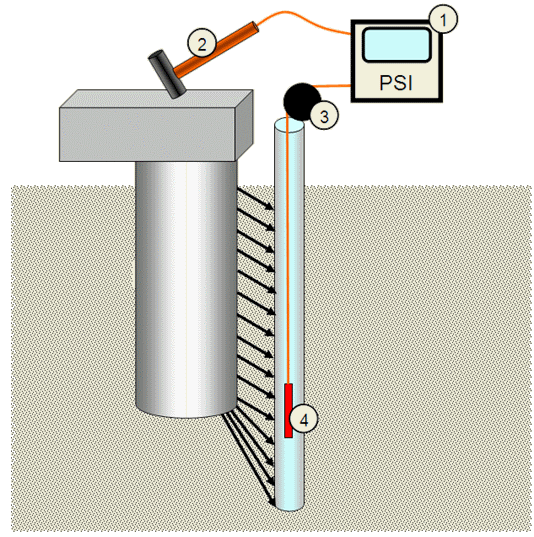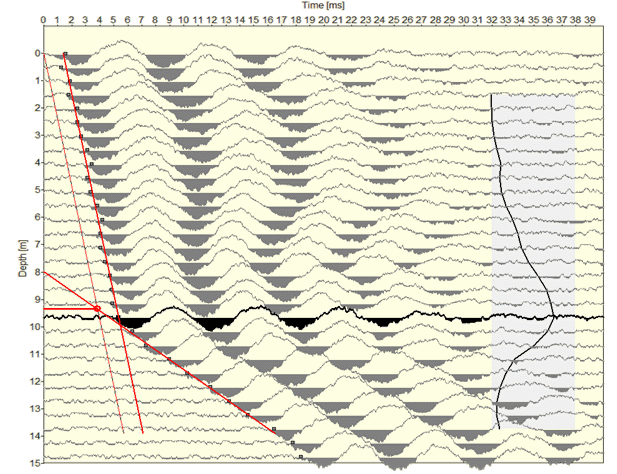

PSI 2
Parallel Seismic Instrument
Overview
PSI uses the well-known Parallel Seismic method to establish the depth of existing foundations (specifically for a pile or deep foundations) where the superstructure (i.e., existing building) precludes access to the pile heads.
It is sometimes the only pile integrity test that can be performed.
The test requires the installation of a plastic access tube in parallel and as close as possible to the tested pile. The tube should be carried down to a depth exceeding the assumed pile length by a margin of 8m-10m and filled with water. The tube should be firmly grouted in the hole to achieve good coupling with the surrounding soil. The method works well only in saturated soil.
PSI2 is compliant with the following standards:
AFNOR NF P94-160-3 and ASTM D8381-21

The PSI system
System Components:
-
PSI instrument
-
Sledgehammer equipped with a trigger switch
-
Digital depth meter (Optionally wireless)
-
Hydrophone
Operation
As the hydrophone is lowered in stages inside the access tube, the superstructure is hit with the hammer and the pulse arriving at the hydrophone is recorded in the PC that is connected to the instrument. When all the pulses thus collected are plotted versus the respective depths, they show a typical break in the slope at the depth where the pile tip is located.

PSI system components
Main features
-
Easy to use: It is usually self-taught in less than a day. No additional expensive training is needed.
-
Connects to any PC/Laptop via a standard USB port.
-
Interpretation assistance and Second Opinion Services (SOS) are included.
Downloads

PSI typical output